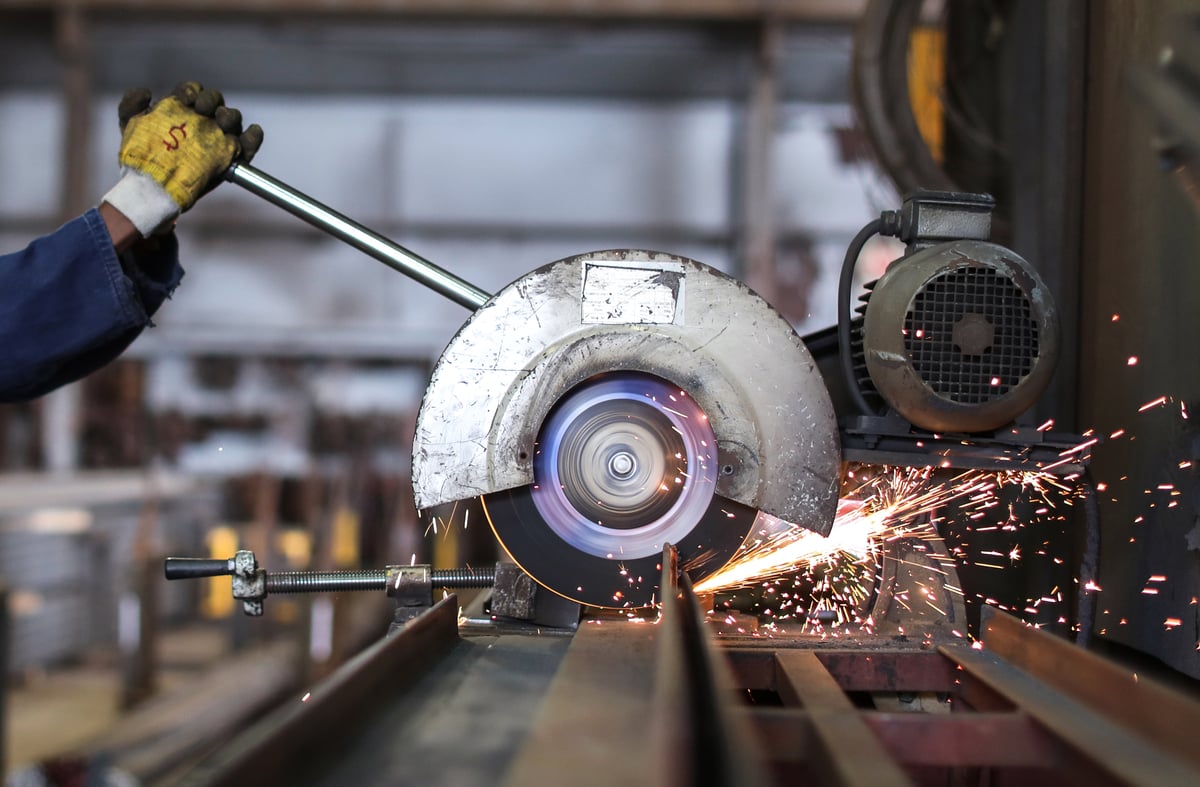Illinois Tool Works (ITW 0.02%) represents one of the most interesting investment propositions in the industrial sector, and the recent investor day presentation only served to highlight it. In a nutshell, management's game plan for the next five years is to improve the productivity of its existing business while divesting some of its underperforming businesses. It's pretty much the business equivalent of simple blocking and tackling, but don't knock it, because it's a strategy that's doubled investors' money in five years. Could the same thing happen over the next five years?
Illinois Tool Works growth plans
Here are the key numbers from the five-year-plan outlook. As you can see below, management expects to convert sales growth in the low to mid-single digits into high-single-digit earnings growth. Meanwhile, based on the estimates for 2018 and the five-year outlook, earnings per share could be anything between $10.60 and $12.20 in 2023.

Image source: Getty Images.
Based on the current stock price of $130, this would put the stock on a 2023 PE ratio of 10.6 times to 12.2 times earnings. Assuming a 50% payout ratio, the stock would sport a 4.1%-to-4.7% dividend yield -- Illinois Tool Works is a dividend aristocrat, having raised its dividend for the last 55 years and counting.
| Metric |
2018-2023 Outlook Notes |
2018 Estimates |
|---|---|---|
|
Operating margin |
28% |
24%-25% |
|
Organic revenue growth |
3%-5% annual growth |
2%-3% |
|
EPS |
7%-10% annual growth |
$7.55-$7.65 |
|
FCF |
100%+ conversion from net income |
100%+ |
|
Dividend payout ratio |
50% |
50% |
Data source: Illinois Tool Works presentations.
Do the numbers add up?
Of course, any company can cobble together five-year-target figures only to leave investors disappointed by the outcome, but the nature of Illinois Tool Works' outlook gives confidence. For example, other companies in the industrial sector, such as 3M (MMM 2.09%) and Rockwell Automation (ROK +0.36%) have given relatively positive outlooks that don't seem to have factored in slowing industrial production growth in 2019.
It's rather surprising that 3M's outlook for the next five years is pretty similar to its previous five-year outlook despite disappointing growth in 2018 and slowing economic growth in 2019. In contrast, Illinois Tool Works' outlook seems reasonable. As you can see below, the midterm growth outlook for each segment has been taken down for each segment, and this probably reflects slowing growth in 2019 -- indeed, management is forecasting 2%-4% organic revenue growth in 2019 compared to the 3%-5% midterm target outlined above.
| Illinois Tool Works Segment Organic Revenue Growth Outlook (Year Over Year) |
2018 Investor Day Outlook |
2017 Investor Day Outlook |
|---|---|---|
|
Automotive OEM |
4%-6% |
5%-6% |
|
T and M and electronics |
3%-5% |
4%-5% |
|
Food equipment |
3%-5% |
4%-5% |
|
Polymers and fluids |
2%-4% |
3%-4% |
|
Welding |
3%-5% |
4%-5% |
|
Construction products |
2%-4% |
3%-4% |
|
Specialty products |
2%-4% |
3%-4% |
Data source: Illinois Tool Works presentations.
Self-help helps
The other key reason Illinois Tool Works' guidance looks achievable that much of it will come from the kind of business initiatives that have proved so successful in the past. Since 2013, management has been on a drive to reposition the portfolio for growth via its enterprise initiatives.
Management believes it's only 70% on the path to applying its so-called "80/20 front to back" process -- a set of principles involving simplifying businesses, paring unprofitable product lines, and focusing on its key customers. As you can see below, these initiatives are a large part of the ongoing margin expansion at the company.

Data source: Illinois Tool Works presentations. Chart by author.
The following table, taken from the investor day presentation, shows there's still work to do with the "not yet growing" businesses. Meanwhile, management is looking at divesting the challenged businesses and offsetting any EPS dilution (from losing revenue from the divested businesses) by making share repurchases.
| Illinois Tool Works |
Business Divisions |
% of Revenues |
Q3 YTD Revenue Growth |
|---|---|---|---|
|
Ready to grow/growing |
44 |
55% |
7.60% |
|
Ready to grow/not yet growing |
36 |
39% |
(2.6%) |
|
Long-term-growth challenged |
7 |
6% |
(4.6%) |
|
Total company |
87 |
100% |
2.60% |
Data source: Illinois Tool Works presentations.
In fact, getting all Illinois Tool Works' businesses to work at their full potential is seen as contributing from 1.5% to 2% of the 3%-5% organic growth rate outlined above.
Provided the economy holds up, the company's targets look achievable. In addition, the free cash flow guidance for 2018 of $2.5 billion to $2.6 billion puts the stock on a price-to-free-cash-flow multiple of around 17 times -- a decent value for a stock with good growth prospects.






